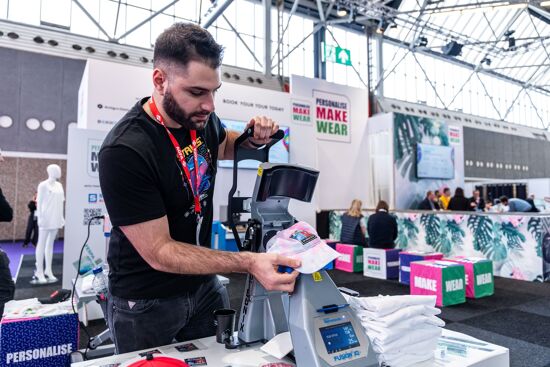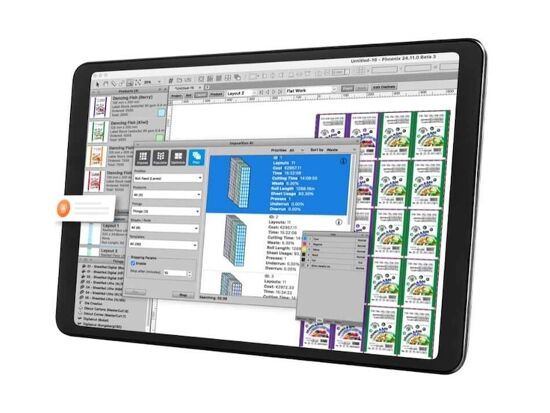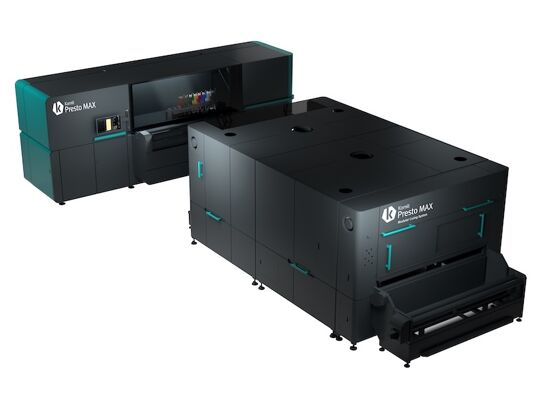Nano particles in inks
Laurel Brunner discusses the use of nano particles in inks in the print industry and how this may affect the environment and human health.
Right now, there are amazing innovations going on with inks as the graphics industry tries to sustain its competitive edge and improve its environmental impacts. Nano inks are used in predominantly sensors, ceramics printing and printed electronics. In the last few years they have been used for commercial and packaging printing since they result in enhanced colour gamut and print quality. We don’t know much about the effect of these inks on the environment or overall human health. One would hope that the impact on human health has been sufficiently researched and tested, however this seems to be more a hope than a reality.
The problem is that nano particles are extremely small, therefore they do not act like normal molecules do. The way in which molecules behave helps us to determine if something such as ink recipe is toxic or not. Their toxicity is dependent on both physical and chemical properties including the particle’s crystalline structure, size, shape, purity, surface electric charge and how the internal and shell components of the particle are constructed. All these factors determine how the nano particle behaves, for example when it enters the bloodstream or is printed or printed and coated onto a barrier surface.
Therefore, nano pigments that are found in inks are a cause for concern. Recently, the European Chemicals Agency (ECHA) reported a new study that looked closely at the state of research into nanomaterials. The European Union (EU) Observatory for Nanomaterials (EUON) has published a list of the substances it has identified as nano-sized pigments (77) and four filler pigments that are used to bulk up inks and lower their cost. The report also demonstrates “gaps in the current knowledge on the hazard and risk assessment of nano-sized pigments.”
The report based its findings on what could be found in various nanomaterials inventories including nano materials listed in the EU’s Registration, Evaluation, Authorisation and Restriction of Chemicals (REACH) regulation. The report also shows data from Belgian, Danish and French government sources. REACH regulates the use of chemicals and how they are produced, with restrictions based on their human health and environmental impacts. REACH affects all industries in Europe that use chemicals and extends beyond the EU’s borders for goods sold into the region. REACH data is usually considered to be very robust and yet the EUON report concludes that “data for hazard and risk assessment aren’t available for the majority of identified nano pigments”. This is very worrying and could potentially have a serious impact on current and new ink technologies, particularly those designed for packaging printing.
The problem of knowing how nano pigmented inks will influence human health is not just a concern for the EU. It has implications for all media markets across the world. The report showed that the data that is available is usually unreliable to the point of being contradictory. The EUON’s goal was to collect more information about the 81 nano-sized pigments used in the EU. However, what they discovered is a lack of reliable information on toxicology data regarding nano pigments. In other words, we don’t know if nano pigments are poisonous or how they perform once printed.
Source: This article was produced by the Verdigris project, an industry initiative intended to raise awareness of print’s positive environmental impact. This commentary helps printing companies keep up to date with environmental standards, and how environmentally friendly business management can help improve their bottom lines. Verdigris is supported by the following companies: Agfa Graphics, Spindrift.click, EFI, FESPA, HP, Kodak, Kornit Digital, Ricoh, Splash PR, Unity Publishing and Xeikon.
Topics
Interested in joining our community?
Enquire today about joining your local FESPA Association or FESPA Direct
Recent news

Special Effects in DTF Will Make Your “Prints” More Memorable
The DTF market is expanding with new vendors and innovations like multi-head printers enabling diverse ink options (spot, neon). Decorative films offer streamlined special effects. Keypoint Intelligence tested metallic and glitter films, noting varied ease of use and wash durability. New technology using adhesive and foil directly promises further creative advancements in DTF.

SmartHub – Expectations, opportunities and why you should attend!
The SmartHub at Personalisation Experience 2025 in Berlin will showcase personalisation and smart production opportunities across industries like textiles. Featuring a Smart Factory Trail with brands like Inkcups and Trotec, and a conference with experts discussing AI, mass customisation, and profit strategies, it offers insights into reducing waste and boosting efficiency through digital methods. Panel sessions will explore growth, automation in textiles, and smart manufacturing.

How is AI revolutionising Large Format Print?
Nessan Clearly discusses how AI in print relies on data pattern matching, already enhancing software for large format providers. He predicts that this will result in increased AI integration in workflow planning, job queue management, colour correction, image upscaling, and predictive maintenance via sensors and vision systems, ultimately streamlining operations and offering greater flexibility.

One Ink for All? Exploring Pigment in Textile Printing
Digital textile printing faces complexity due to diverse substrates requiring specific inks. The industry seeks a universal ink, with pigment ink showing potential. While traditionally for natural fibres, advancements aim to broaden its application, simplify processes by reducing pre/post-treatment, and improve sustainability, though challenges like hand feel on garments remain.